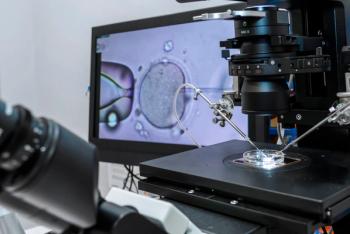
Diagnostic Puzzler: A simple UTI that wasn't so simple
Miss SC was a 21-year-old G4, P0030 at 21 weeks' gestation by last menstrual period and confirmed by second-trimester ultrasound. Her pregnancy, which had been managed through a clinic, was complicated by multiple urinary tract infections and she had recently been diagnosed with pyelonephritis. The condition was treated with IV antibiotics at a community hospital and she was discharged with a prescription for ampicillin to be taken for 7 days. Miss SC said she felt well until 2 days before her second admission to the same community hospital, when she began having sharp, intermittent right upper-quadrant pain that was unrelated to eating.
Miss SC was a 21-year-old G4, P0030 at 21 weeks' gestation by last menstrual period and confirmed by second-trimester ultrasound. Her pregnancy, which had been managed through a clinic, was complicated by multiple urinary tract infections and she had recently been diagnosed with pyelonephritis. The condition was treated with IV antibiotics at a community hospital and she was discharged with a prescription for ampicillin to be taken for 7 days. Miss SC said she felt well until 2 days before her second admission to the same community hospital, when she began having sharp, intermittent right upper-quadrant pain that was unrelated to eating.
Dr. Sambaziotis presents details of the case
The patient's appetite was decreased but she did not have nausea or vomiting, dysuria, urgency, frequency, flank pain, or diarrhea. Although she never took her temperature, Ms. SC said she "felt warm" at home and had a fever of 104.1 on admission. She was started on IV ampicillin and rocephin for presumed recurrence of pyelonephritis. A renal sonogram showed a small stone in the patient's right kidney and mild bilateral hydronephrosis.
Ms. SC's temperature was 101.1, blood pressure 96/46, pulse in the 120s, and a respiratory rate of 18. Physical exam revealed a black female in distress with shaking chills. She had mild CVA tenderness on her right side and right upper- and lower-quadrant pain with rebound and guarding. Pelvic exam showed that she was 2 cm dilated with a long and posterior cervix, reassuring fetal tracing, and no contractions on tocometer.
Lab values point to the diagnosis. The patient was given nothing by mouth but aggressively hydrated and lab tests and a stat surgery consult were ordered. Miss SC's white count was 14.5 with 29 bands. She was anemic with a hematocrit of 25.2. Chem 8, LFTs, amylase, and lipase values all were within normal limits. Her urinalysis was positive for large leukocyte esterase and large blood.
Imaging reveals the truth. A CT scan was ordered and revealed pancolitis with thickening of the large bowel from cecum to rectum. The patient was started on IV cefipine and flagyl and a stool sample was tested for Clostridium difficile toxin, ova, and parasites, and cultured. Flexible sigmoidoscopy was conducted to explore differential causes of Miss SC's colitis. The findings were consistent with pseudomembraneous colitis, which was confirmed when results from the stool sample came back positive for C. difficile toxin. When Miss SC developed severe diarrhea on hospital day 2 and continued to be febrile with an elevated white blood cell count and bandemia, her antibiotic regimen was changed to IV vancomycin and flagyl. She slowly improved and results of a urine culture taken during the patient's first admission to the community hospital subsequently were found to contain Enterobacteriacae that was resistant to pencillin.
Newsletter
Get the latest clinical updates, case studies, and expert commentary in obstetric and gynecologic care. Sign up now to stay informed.
















